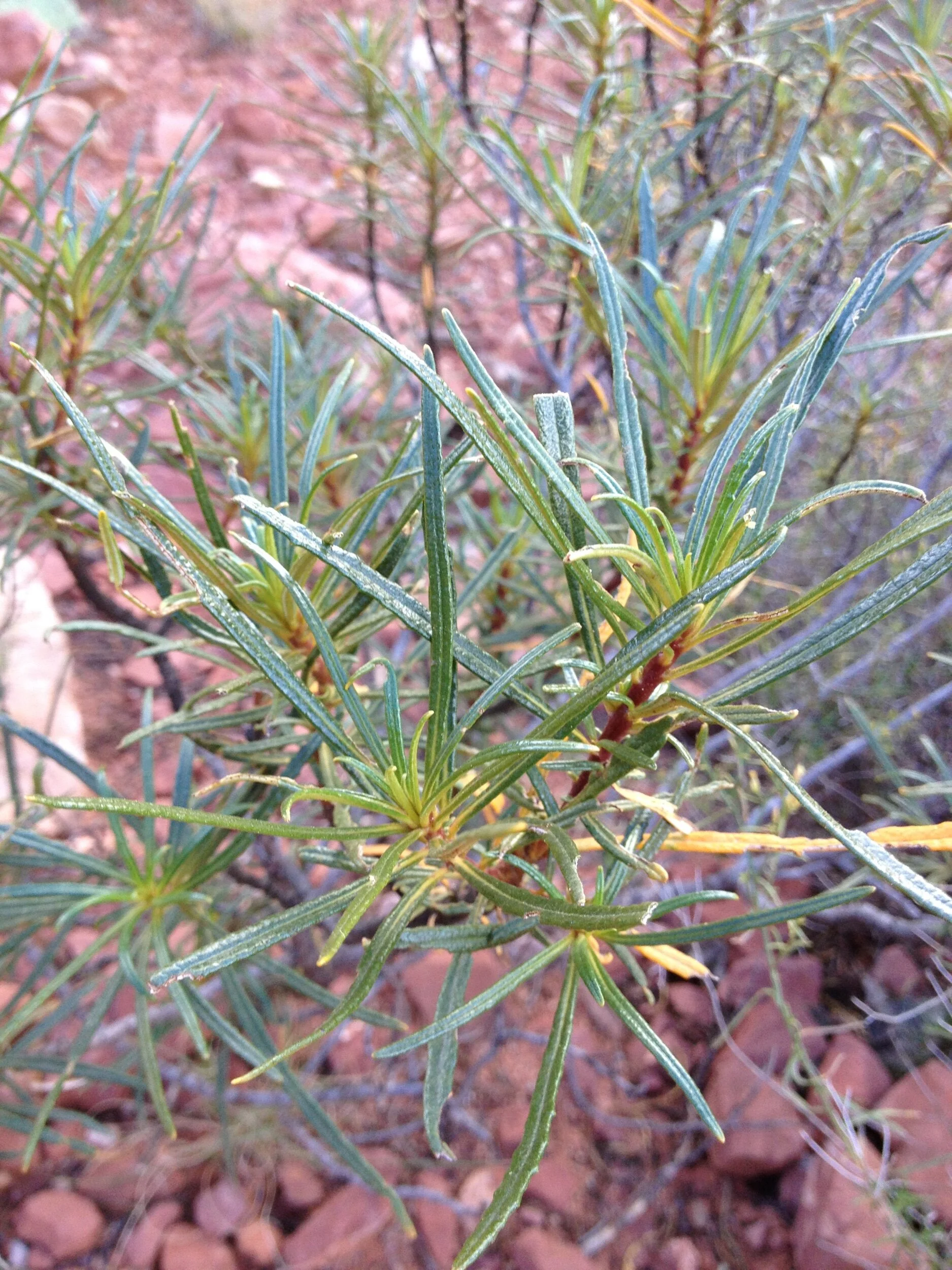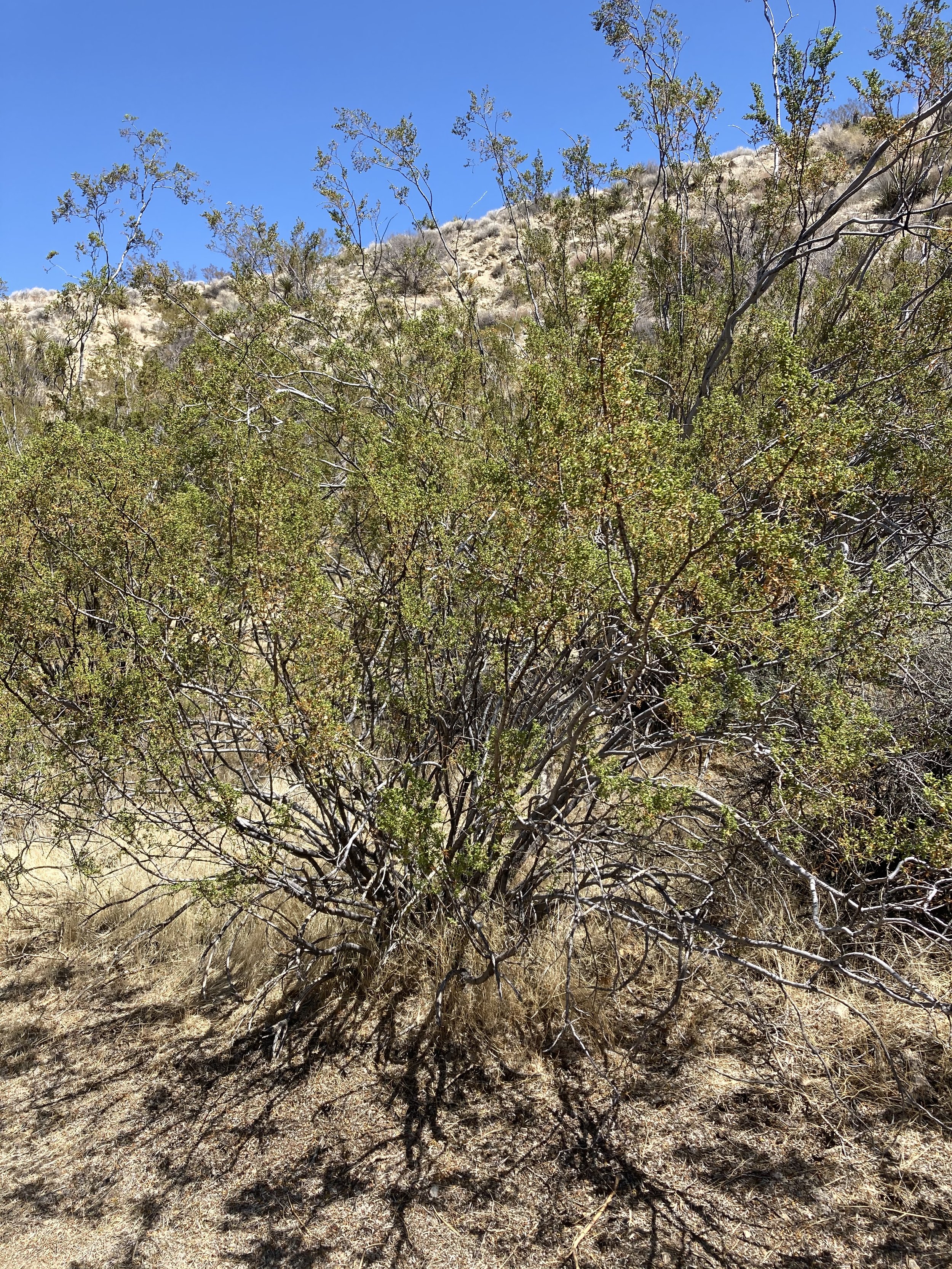Nothing contained in these pages is meant to be taken as any type of claim or advice. This is only educational information about traditional and modern uses of local plants as well as my own personal experience with them. It is always good to do lots of research from reliable sources. Please don’t mistake medicinal or edible plants for poisonous lookalikes. When in doubt, err on the side of caution.
Yerba Santa (Eriodictyon trichocalyx)…my fave Yerba Santa species. Taken from the Upper West Fork of the San Gabriel River in the Angeles National Forest. All species have lots of flavonoids, including some that are fairly unique as well as volatile oils, some tannins, and other compounds. All species have been traditionally used for inflammation and infections-especially those of the respiratory system. The plant can also be drying to excessive mucous. Most if not all tribes in California made use of it. Various species of Yerba Santa also grow in neighboring states and in Baja. Yerba Santa generally likes hot dry habitats. The leaves are the part that is usually used-especially in the summer when it is more resinous.
White Sage (Salvia Apiana). I almost don’t want to include this because there has been an issue with people over harvesting this plant to make “Smudge Sticks” and rangers will cite people for harvesting it without a permit. Please respect our ecosystems and plants. White Sage and other Sages do have antimicrobial volatile oils and are also drying to excessive fluid in the body. I’ve used tea from the leaves of various Sages as gargles for sore throats and chewed on leaves and rubbed them on the gums for gum irritation. The seeds are edible-similar to Chia but not as slimy in liquid. Some Sages have been used for relaxing the nerves and for mental acuity also. White Sage (and other Sage species) grows in hot dry areas in Southern California and Baja.
Milk Thistle (Silybum marianum). This plant grows in California but is not native and often invasive. The seeds are a well known remedy for some types of issues involving the liver. A preparation from the seeds is used in parts of Europe for poisoning, including poisoning from mushrooms that are toxic. The plant is full of formidable thorns but is edible otherwise (although a bit bitter).
Grindelia (Grindelia camporum) in Nicholas Flat near Malibu. The sap inside the flower heads is very cooling and soothing. It has been used both internally and externally for conditions involving inflammation, infections, and irritation. The flower sap is even a traditional remedy for Poison Oak (not a cure of course, but I’ve noticed that it used to take the edge off of the irritation).
Stinging Nettles. Potrero John trail above Ojai. Much can be written about Stinging Nettles, so for now, I’ll just summarize and keep adding more as I go. Nettles are very rich in minerals-they grow in alkaline soil, often near water sources. The seeds are high in Amino Acids. The leaves are very rich in chlorophyll. Basically, to use a highly overused marketing term, Nettles are a superfood.
Despite the fact that the sting from the tiny stinging hairs on the stems and to a lesser extent the leaves can be irritating, Nettles have a long history of use in many cultures for inflammatory conditions such as Allergies, Gout, and Rheumatism. Interestingly enough, people would whip themselves or other people with the plant as a counter irritant for Rheumatism too. There are both larger perennial varieties and dwarf varieties of Nettles (Urtica) in California. They tend to be more common in the north and central coast than in So Cal. I’ll keep adding to this and other herbs.
California Blackberry (Rubus ursinus) taken in Whitney Canyon in Santa Clarita.
Mexican Elderberry (Sambucus Mexicana)
Coyote Mint (Monardella villosa)
Yerba Mansa (Anemopsis californica). Big Morongo Preserve
Fennel (Foeniculum vulgare). Myriad of traditional and modern uses including being a wonderful herb for many instances of gas, indigestion, and malabsorption of food. Be extra careful not to confuse it with poionous lookalikes such as Poison Hemlock which it often shares habitat with. They are particularly hard to tell apart when they have gone to seed.
Miners Lettuce (Claytonia perfoliata). Edible and nutritious.
Chia Sage (Salvia columbariae). Yes, we have a native variety of Chia.
California Huckleberry (Vaccinium ovatum). Yummy ;) great source of Antioxidants. Picture taken in Elfland.
Hummingbird Sage (Salvia spathaceae).
A narrow lead species of Yerba Santa on the Mystic Trail in Sedona, Az (Eriodictyon augustifolium).
California Mugwort (Artemisia douglasiana).
Yucca (Hesperoyucca whipleii-formerly Yucca whipleii). Upper West Fork of the San Gabriel River.
Lemonadeberry (Rhus integrifolia). Sour citrusy tasting berries with large seeds in the middle. A type of Sumac (genus Rhus).
Wooly Blue Curls (Trichostema lanatun)
California Wild Rose (Rosa californica)
Prickly Pear Cactus (Opuntia littoralis)
Chickweed (Stellaria media)
Golden Currant
Wooly leaf Yerba Santa (Eriodictyon crassifolium).
Yarrow (Achillea millefolium)
Narrow Leaf Plantain
Manzanita in bloom
Horsetail
Cleavers
California Poppy
Creasote Bush
































